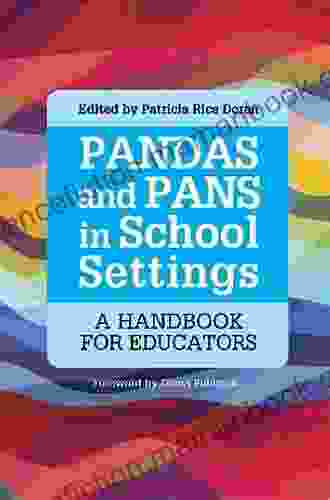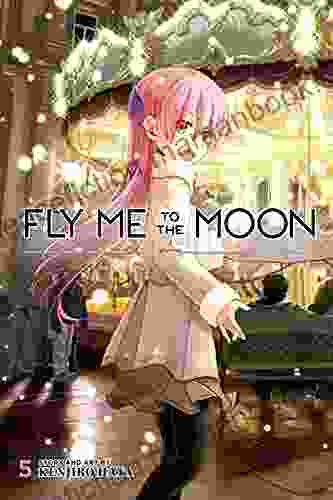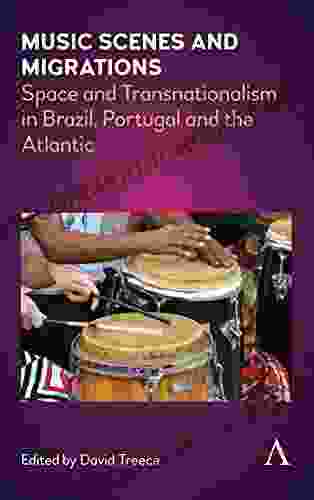Space and Transnationalism in Brazil, Portugal, and the Atlantic Anthem: Brazilian Music and the Construction of Transnational Identities in the 20th Century

The concept of space is central to understanding the phenomenon of transnationalism. Transnationalism refers to the movement of people, ideas, and objects across national borders, and it is often associated with the globalization of culture and economy. However, transnationalism is not simply a product of globalization; it has a long history that can be traced back to the colonial era.
4.3 out of 5
| Language | : | English |
| File size | : | 4564 KB |
| Text-to-Speech | : | Enabled |
| Screen Reader | : | Supported |
| Enhanced typesetting | : | Enabled |
| Print length | : | 421 pages |
In the case of Brazil, Portugal, and the Atlantic Anthem: Brazilian Music and the Construction of Transnational Identities in the 20th Century, space played a key role in the development of transnational identities. The Atlantic Ocean was a major conduit for the movement of people and ideas between Brazil and Portugal, and it also served as a symbol of the shared cultural heritage of the two countries. Brazilian music, in particular, played a vital role in the construction of transnational identities, as it provided a common language for Brazilians and Portuguese living in different parts of the world.
The origins of Brazilian music can be traced back to the colonial era, when Portuguese settlers brought their own musical traditions to Brazil. These traditions were quickly adapted by African slaves and indigenous peoples, and they eventually gave rise to a unique Brazilian sound. In the 20th century, Brazilian music began to gain international recognition, thanks in part to the efforts of musicians such as João Gilberto, Antônio Carlos Jobim, and Vinicius de Moraes. These musicians helped to popularize bossa nova, a new Brazilian sound that combined elements of samba, jazz, and classical music.
Bossa nova quickly became a global phenomenon, and it helped to create a new sense of transnational identity among Brazilians and Portuguese. The music was embraced by people from all walks of life, and it became a symbol of the shared cultural heritage of the two countries. Bossa nova also helped to break down barriers between Brazil and the rest of the world, and it paved the way for other Brazilian musicians to achieve international success.
In the years since the rise of bossa nova, Brazilian music has continued to evolve and change, but it has never lost its transnational appeal. Today, Brazilian music is enjoyed by people all over the world, and it continues to play a vital role in the construction of transnational identities.
The relationship between space and transnationalism is a complex one, and it has been the subject of much scholarly research. In the case of Brazil, Portugal, and the Atlantic Anthem: Brazilian Music and the Construction of Transnational Identities in the 20th Century, space played a key role in the development of transnational identities. The Atlantic Ocean was a major conduit for the movement of people and ideas between Brazil and Portugal, and it also served as a symbol of the shared cultural heritage of the two countries. Brazilian music, in particular, played a vital role in the construction of transnational identities, as it provided a common language for Brazilians and Portuguese living in different parts of the world.
Today, Brazilian music continues to be a powerful force for transnationalism. It is enjoyed by people all over the world, and it helps to create a sense of community among Brazilians and Portuguese living in different countries. Brazilian music is a reminder that space is not a barrier to human interaction, and that transnational identities are not simply a product of globalization; they have a long history that can be traced back to the colonial era.
4.3 out of 5
| Language | : | English |
| File size | : | 4564 KB |
| Text-to-Speech | : | Enabled |
| Screen Reader | : | Supported |
| Enhanced typesetting | : | Enabled |
| Print length | : | 421 pages |
Do you want to contribute by writing guest posts on this blog?
Please contact us and send us a resume of previous articles that you have written.
 Top Book
Top Book Novel
Novel Fiction
Fiction Nonfiction
Nonfiction Literature
Literature Paperback
Paperback Hardcover
Hardcover E-book
E-book Audiobook
Audiobook Bestseller
Bestseller Classic
Classic Mystery
Mystery Thriller
Thriller Romance
Romance Fantasy
Fantasy Science Fiction
Science Fiction Biography
Biography Memoir
Memoir Autobiography
Autobiography Poetry
Poetry Drama
Drama Historical Fiction
Historical Fiction Self-help
Self-help Young Adult
Young Adult Childrens Books
Childrens Books Graphic Novel
Graphic Novel Anthology
Anthology Series
Series Encyclopedia
Encyclopedia Reference
Reference Guidebook
Guidebook Textbook
Textbook Workbook
Workbook Journal
Journal Diary
Diary Manuscript
Manuscript Folio
Folio Pulp Fiction
Pulp Fiction Short Stories
Short Stories Fairy Tales
Fairy Tales Fables
Fables Mythology
Mythology Philosophy
Philosophy Religion
Religion Spirituality
Spirituality Essays
Essays Critique
Critique Commentary
Commentary Glossary
Glossary Bibliography
Bibliography Index
Index Table of Contents
Table of Contents Preface
Preface Introduction
Introduction Foreword
Foreword Afterword
Afterword Appendices
Appendices Annotations
Annotations Footnotes
Footnotes Epilogue
Epilogue Prologue
Prologue Jenny Ashcroft
Jenny Ashcroft Ashley Mears
Ashley Mears Marly Bird
Marly Bird Keith Robinson
Keith Robinson Sheila Kilbane Md
Sheila Kilbane Md Selina Tusitala Marsh
Selina Tusitala Marsh Hugh Brewster
Hugh Brewster Rails To Trails Conservancy
Rails To Trails Conservancy Deborah Ellis
Deborah Ellis Angela Lovell
Angela Lovell Nikos Kazantzakis
Nikos Kazantzakis John Railey
John Railey R Douglas Hurt
R Douglas Hurt Nicole A Taylor
Nicole A Taylor Gili Drober
Gili Drober David M Jones
David M Jones Angie Hockman
Angie Hockman Ian Lord
Ian Lord Juddy Anderson C Punzalan
Juddy Anderson C Punzalan Jim Norton
Jim Norton
Light bulbAdvertise smarter! Our strategic ad space ensures maximum exposure. Reserve your spot today!
 Bryce FosterFollow ·5.8k
Bryce FosterFollow ·5.8k Cameron ReedFollow ·19.1k
Cameron ReedFollow ·19.1k Hayden MitchellFollow ·18.8k
Hayden MitchellFollow ·18.8k Jaylen MitchellFollow ·14.2k
Jaylen MitchellFollow ·14.2k Samuel BeckettFollow ·17.4k
Samuel BeckettFollow ·17.4k Corey HayesFollow ·4.3k
Corey HayesFollow ·4.3k Eli BrooksFollow ·14.1k
Eli BrooksFollow ·14.1k Ryūnosuke AkutagawaFollow ·15.8k
Ryūnosuke AkutagawaFollow ·15.8k

 Ashton Reed
Ashton ReedClean(ish) Food for People Who Like to Eat Dirty
By: [Your Name] Are...

 Ronald Simmons
Ronald SimmonsThe Handbook for Educators: A Comprehensive Guide to...
The Handbook for...

 Derrick Hughes
Derrick HughesAny Place Hang My Hat: A Hauntingly Beautiful Novel by...
A Masterpiece of...

 Adrien Blair
Adrien BlairFly Me to the Moon Vol. 5: A Lunar Odyssey through...
In the vast...

 William Powell
William PowellTips By Gardeners On Variety Of Subjects
Gardening...
4.3 out of 5
| Language | : | English |
| File size | : | 4564 KB |
| Text-to-Speech | : | Enabled |
| Screen Reader | : | Supported |
| Enhanced typesetting | : | Enabled |
| Print length | : | 421 pages |













